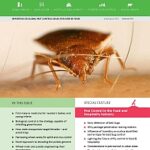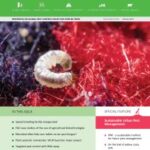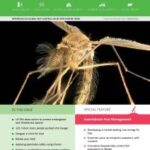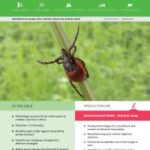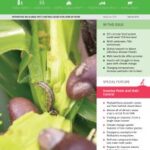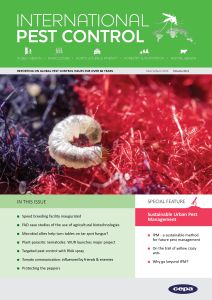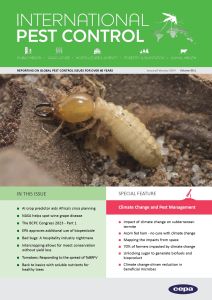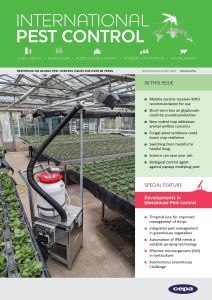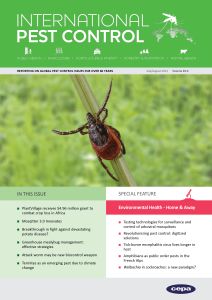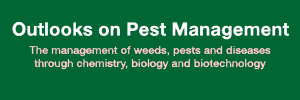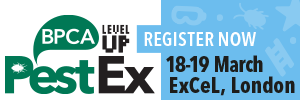Public Health

VERV programme – questions for the EPA
This is the second article in a two-part series regarding the intertwined problems of growing insecticide resistance and the lack of investment in novel public health use insecticides (Part I can be found in the November/December 2023 issue of IPC). A new US incentive programme aims to mitigate these problems. Reading the US Environmental Protection […]

Coping with dead rodent odours
Pest Control Professionals (PCPs) are often confronted with horrible odours from dead rodents. The death could have been natural, from the use of a rodenticide, or from a trap that struck the rodent, did not capture it, but was fatal. If the technician is lucky, they can find and remove the dead carcass. If the […]
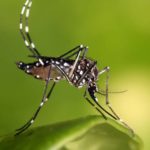
An innovative year-round larvicide for mosquito control
Mosquitoes are considered one of the most serious vectors of some of the world’s deadly diseases afflicting the tropical and subtropical countries. One of the devastating mosquito transmitted diseases, malaria is known to be endemic in 117 countries with 3.2 billion people living at risk all over the world and about 350 to 500 million […]
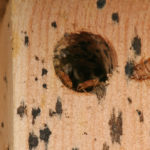
Remote monitoring for bed bugs
A global bed bug (Cimex lectularius) resurgence has continued throughout the past two decades, following a period of relative absence for most of the world between 1960 and 2000 (Boase, 2001; Reinhardt & Siva-Jothy, 2007). The cause of the modern resurgence is likely to be the result of multiple factors facilitating their survival, reproduction and […]
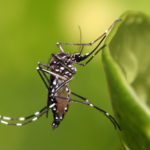
Genetically engineered Aedes aegypti
After extensive evaluation of the best available science and public input, the US Environmental Protection Agency (EPA) has granted an experimental use permit (EUP) to Oxitec Ltd to field test the use of genetically engineered Aedes aegypti mosquitoes as a way to reduce mosquito populations to protect public health from mosquito-borne illnesses. The EPA claimed […]
Agriculture

AI crop predictor aids Africa’s crisis planning
An Artificial Intelligence (AI) tool is using satellite remote sensing and machine learning to predict agricultural yields of key crops across Africa, to help mitigate the harms of climate change and other crises, its developers say. The Africa Agriculture Watch (AAgWa) tool will aid the production of staple foods including, maize, cassava and sorghum, across […]

Functional diversification of a wild potato
Globally, huge quantities of crop protection agents are sprayed to control potato late blight. To make potato farming more sustainable and less reliant on sprays, we need crops that are inherently resistant to such diseases. “There is a continuous ‘arms race’ between the potato plant and Phytophthora,” says Vivianne Vleeshouwers, a plant scientist at Wageningen […]

IPM to fight fall armyworm
CABI scientists are recommending the use of more environmentally sustainable biological controls, as part of an Integrated Pest Management (IPM) strategy, to fight the fall armyworm (FAW) instead of favouring more harmful pesticides. In a new paper published in the International Journal of Pest Management, Dr Justice Tambo led a team of researchers who suggest […]
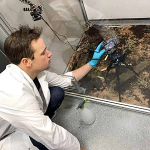
Smartphone app is the farmer’s newest weapon in crop protection
Scientists are creating a new smartphone app to help farmers and growers tackle the pests destroying their crops, and it could soon have a major impact on the way information about the natural world is gathered, stored and accessed worldwide. The team of researchers from the University of Lincoln, UK, is designing and building the […]
DNA scan crop failure solution is a UK first
In a UK first, a pioneering scientific research company has introduced a new way for growers to test their plants and crops for harmful fungi and bacteria, allowing action to be taken before it’s too late. Eurofins Agro UK has introduced scientific testing to the UK which can detect an issue before it becomes visible, […]
Horticulture & Amenity

Tomatoes: Responding to the spread of ToBRFV
In recent years, the tomato industry has faced a major challenge from the spread of tomato brown rugose fruit virus (ToBRFV), and despite many phytosanitary measures, infection rates have continued to rise. New High Resistance varieties will change this in the short term, and Paul Grootscholten of Agro Care has been evaluating the high resistant […]
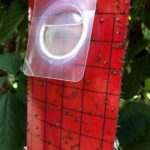
Monitoring and trapping with sticky traps, what’s new?
One hundred years ago, it was observed that greenhouse whiteflies, Trialeurodes vaporariorum (Westwood) (Hemiptera, Aleyrodidae) are particularly attracted to opaque yellow traps (Lloyd, 1921). Today, millions of sticky traps (card or plastic covered with a thin layer of a clear adhesive substance) of different colours are used worldwide. They are used for the monitoring, decision […]
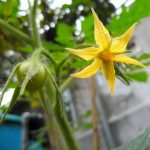
Natural weapon used by marigolds
Scientists have revealed for the first time the natural weapon used by marigolds to protect tomato plants against destructive whiteflies. Researchers from Newcastle University’s School of Natural and Environmental Sciences carried out a study to prove what gardeners around the world have known for generations – marigolds repel tomato whiteflies. Publishing their findings in the […]

More sustainable tea production in India
CABI scientists have revealed that India’s tea – which accounts for around 27 percent of the world’s tea production – could be protected from devastating crop pests with more environmentally friendly and sustainable biological controls rather than an over reliance on pesticides. As part of research funded by Unilever and working with partners including the […]
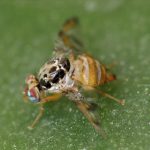
Development of fruit fly control strategies
The Mediterranean fruit fly Ceratitis capitata (Wiedemann) (Diptera: Tephritidae) constitutes one of the key pests of citrus, being the target of many IPM programs around the Mediterranean Sea. This species has a great ability to disperse, to use alternative hosts and displays a great developmental plasticity allowing it to survive most of the year, contributing […]
Forestry & Plantation

Ips typographus in the UK – an answer for every entry
The alien invasive spruce bark beetle Ips typographus continues to crop up in the UK with the latest discovery in Scotland and a first for that country. This is certainly the scariest identification so far given that the bulk of commercial forestry in Scotland is based on Sitka spruce. This latest finding of Ips typographus […]

Biological fungicide reveals disease resistance in Cameroon
Russell Bio Solutions has developed an effective microbial fungicide, Dynamic WP. It is a powerful broad-spectrum biological fungicide and bactericide that can be applied to a wide range of crops to suppress fungal diseases. Other target diseases include wheat smut, Fusarium root rot, Banana Panama and Sigatoka disease, powdery mildew, early and late blight, and […]
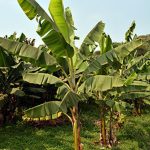
First ever plantain resistant to banana streak virus
Using the gene editing tool CRISPR, a team of scientists at the International Institute of Tropical Agriculture (IITA) has announced that they have developed banana and plantain varieties that are resistant to banana streak virus (BSV). BSV is hampering the crop’s production in Africa and threatening the food and income of millions of farmers. BSV […]
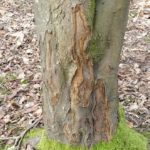
A tale of two squirrels
The two species of squirrel resident in the United Kingdom (UK) are Sciurus vulgaris (native European Red Squirrel) and Sciurus carolinensis (North American Eastern Grey Squirrel), the latter introduced as a fashionable addition to estates in the 1870’s. Its population of 2.5 million is spread over most of the UK and dwarves the 140,000 native […]
World Pest Awareness Day
The 6th June 2017 has been declared World Pest Awareness Day to serve as a reminder of how professional pest management helps protect our quality of life. Three global pest management associations; The Confederation of European Pest Management Associations (CEPA), the Federation of Asian and Oceania Pest Managers’ Association (FAOPMA) and the @NationalPestManagementAssn (USA), have […]
Animal Health

New sub-Saharan infectious disease surveillance program
The African Small Companion Animal Network (AFSCAN), a project of the World Small Animal Veterinary Association’s (WSAVA) charitable foundation, has launched a significant new sub-Saharan infectious disease surveillance program. With Bayer Animal Health as the major sponsor, the program will provide novel data on the prevalence and distribution of ectoparasites and arthropod-borne infectious diseases of […]
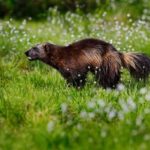
Pests & Our Pets: Keeping Companion Animals Safer
With all the damage that pests can cause to businesses, agriculture and even the environment itself, sometimes it’s simply a necessity to use things like pesticides and other ways to keep their populations at bay. But rather than waiting until they’ve become a problem, either in our homes or towards our pets, it’s better to […]
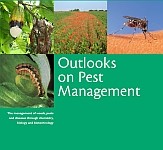
Augmenting the Efficacy of Fungal and Mycotoxin Control via Chemosensitization
Mycotoxins, fungicides and crop production Infection of crops by fungal pathogens, especially those that produce mycotoxins, e.g., aflatoxins, fumonisins, zearalenone, patulin, ochratoxins, etc., is problematic because effective fungicides for eliminating mycotoxigenic fungi, especially fungicide-resistant pathogens, are sometimes very limited. Recent data showed that mycotoxin contamination damages around 25% of global food and feed crop production […]

Large-scale Monitoring of Insecticide Susceptibility in Cat Fleas, Ctenocephalides felis
Introduction The cat flea, Ctenocephalides felis (Siphonaptera: Pulicidae) (Figure 1) is the most important ectoparasite of domestic cats and dogs worldwide. Infestations can lead to skin inflammation and cause flea allergy dermatitis, and fleas are also capable of transmitting several other parasites and diseases between animals and, indirectly, to humans. Fleas have a homometabolous life-cycle […]

An innovative approach in poultry mite management
Insecticides have greatly improved human health and agricultural production worldwide, however their usefulness has been limited by the evolution of resistance in many major pests, with the addition factor that some species become pests only as a result of insecticide use. This aspect opens new avenues to look for insecticide formulation with new and innovative […]
Special Features

Impact of climate change on subterranean termite
Termite control is a major enterprise in most parts of the world, undertaken to protect structures and properties. Historically the interaction of termites and humans probably started when termites attacked crops and manmade structures containing cellulosic material. This interaction has now taken a shape resembling a confrontation, thanks to extensive land use by humans for […]

The future evolution of pest control
Organized pest control has a long history that dates to 4000 BC when the first ever pest control solution – sulphur – was used in ancient Sumer to keep insects away from crops. Since then, pest control has seen steady progress, from botanical products used as fungicides for seed treatments in China, to professional “rat-catchers” […]

Using pesticides in amenity areas
Using pesticides in amenity areas such as parks, golf courses and other areas open to the public has to conform to the EU regulations in a similar manner to protecting crops on farms. The main difference is that there are a diverse range of spray targets which frequently have to be treated using manually carried […]

Managing the problem of leatherjacket at UK airports
UK airports recently faced an issue due to the removal of a chemical, or to be precise the lack of knowledge regarding its avail- ability. The application of European EC Regulation 2009/128/EC, applied by the UK, led to the nationwide withdrawal of Chlorpyrifos. However, since the 1960’s chlorpyrifos had helped in the control of larvae […]
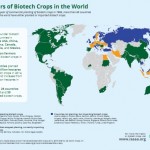
Barriers to the adoption of GM crops
The use of genetic engineering techniques in agriculture and food production is seen as an exciting and valuable development by many. They welcome the improvements in production efficiency that they bring to farmers and the enhanced nutritional value that can benefit consumers. Others however, have objected strongly, raising environmental, food safety, and ethical concerns. A […]
Other Recent Articles

Company Profile…ENDURA S.p.A: 45 years of innovation, growth, and a vision for the future
Endura has marked a pivotal moment in its history with four major milestones: the inauguration of its state-of-the-art headquarters, the celebration of its 45th anniversary, the launch of its new PBO Prime product and the unveiling of a new website. These achievements signify Endura’s continued evolution, redefining industry standards through quality, responsibility, and innovation. Innovation […]

New Release – The Pest Report | July 2025 – Issue 3
The latest issue of The Pest Report is now available, bringing essential insights for professionals across crop protection, agronomy, and pest management. This edition covers timely and high-impact topics affecting global agriculture: 🔬 Tuta absoluta Gain updated strategies and integrated approaches for managing the Tomato Leaf Miner—a persistent threat in tomato production. 🌿 Winter Moth […]

Outlooks on Pest Management – June 2025 Vol36:3 – Editorial
By no means all Doom and Gloom! Outlooks on Pest Management is widely known as a primary source of reliable and up to the minute information on a broad range of topics that are of interest and importance to pest management practitioners, industry and researchers around the world. This continues to be reflected in this […]

International Pest Control – Hub
We’re proud to announce the official launch of Hub.International-Pest-Control.com — the global meeting point for professionals across Public Health, Agriculture, Horticulture & Amenity, Forestry & Plantation, and Animal Health sectors. This is more than just a website — it’s a community-driven platform built for pest management professionals worldwide. Whether you’re on the front lines, in […]




